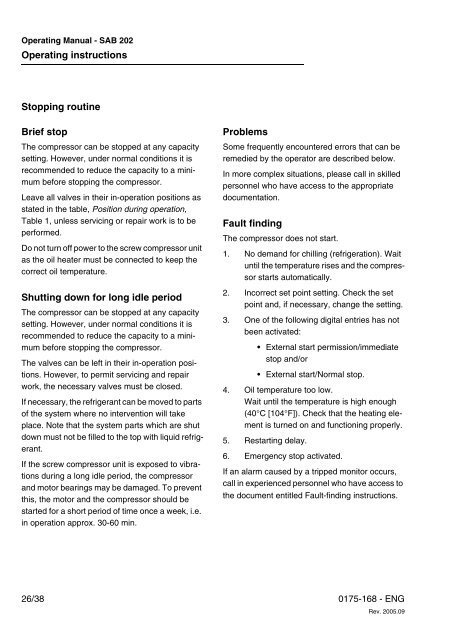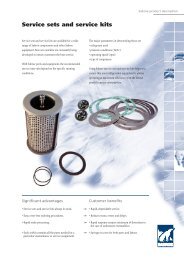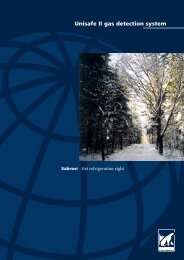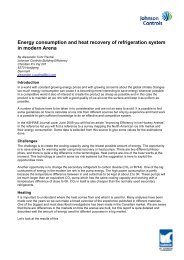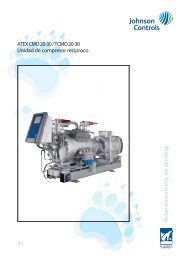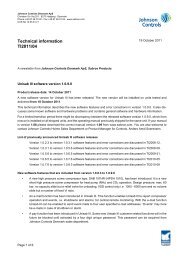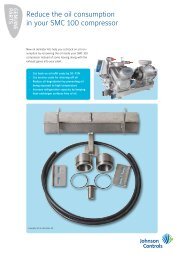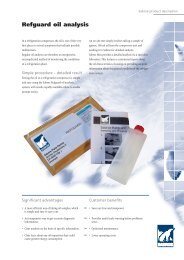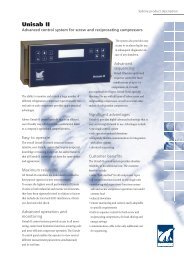Operating manual SAB 202
Operating manual SAB 202
Operating manual SAB 202
Create successful ePaper yourself
Turn your PDF publications into a flip-book with our unique Google optimized e-Paper software.
<strong>Operating</strong> Manual - <strong>SAB</strong> <strong>202</strong><br />
<strong>Operating</strong> instructions<br />
Stopping routine<br />
Brief stop<br />
The compressor can be stopped at any capacity<br />
setting. However, under normal conditions it is<br />
recommended to reduce the capacity to a minimum<br />
before stopping the compressor.<br />
Leave all valves in their in-operation positions as<br />
stated in the table, Position during operation,<br />
Table 1, unless servicing or repair work is to be<br />
performed.<br />
Do not turn off power to the screw compressor unit<br />
as the oil heater must be connected to keep the<br />
correct oil temperature.<br />
Shutting down for long idle period<br />
The compressor can be stopped at any capacity<br />
setting. However, under normal conditions it is<br />
recommended to reduce the capacity to a minimum<br />
before stopping the compressor.<br />
The valves can be left in their in-operation positions.<br />
However, to permit servicing and repair<br />
work, the necessary valves must be closed.<br />
If necessary, the refrigerant can be moved to parts<br />
of the system where no intervention will take<br />
place. Note that the system parts which are shut<br />
down must not be filled to the top with liquid refrigerant.<br />
If the screw compressor unit is exposed to vibrations<br />
during a long idle period, the compressor<br />
and motor bearings may be damaged. To prevent<br />
this, the motor and the compressor should be<br />
started for a short period of time once a week, i.e.<br />
in operation approx. 30-60 min.<br />
Problems<br />
Some frequently encountered errors that can be<br />
remedied by the operator are described below.<br />
In more complex situations, please call in skilled<br />
personnel who have access to the appropriate<br />
documentation.<br />
Fault finding<br />
The compressor does not start.<br />
1. No demand for chilling (refrigeration). Wait<br />
until the temperature rises and the compressor<br />
starts automatically.<br />
2. Incorrect set point setting. Check the set<br />
point and, if necessary, change the setting.<br />
3. One of the following digital entries has not<br />
been activated:<br />
• External start permission/immediate<br />
stop and/or<br />
• External start/Normal stop.<br />
4. Oil temperature too low.<br />
Wait until the temperature is high enough<br />
(40°C [104°F]). Check that the heating element<br />
is turned on and functioning properly.<br />
5. Restarting delay.<br />
6. Emergency stop activated.<br />
If an alarm caused by a tripped monitor occurs,<br />
call in experienced personnel who have access to<br />
the document entitled Fault-finding instructions.<br />
26/38 0175-168 - ENG<br />
Rev. 2005.09


